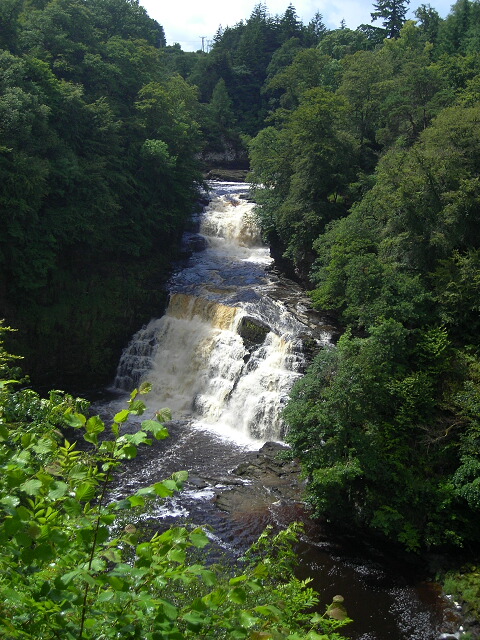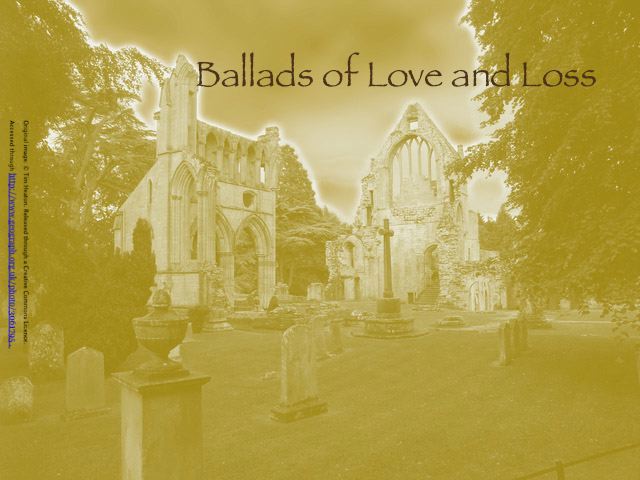Earl Richard
Scott included a version of “Earl Richard” in the first edition of the Minstrelsy of the Scottish Border. However, the 1803 version is slightly longer, with an additional scene included in the ballad narrative. Scott notes that his version is a collation of two versions of the ballad which were contained in Herd’s MS, along with “some trivial alterations … adopted from tradition”. This ballad – also commonly known as “Young Hunting” – is one of the traditional ballads which made the transatlantic crossing, to become part of the American, specifically the Appalachian, ballad tradition, although in these, there are notable differences regarding the character and death of Richard.
Tradition
 The murder in this ballad is perhaps the most practically executed in the entire traditional ballad corpus: the lady makes the lord drunk and incapable before she kills him; she is careful not to get his blood on her clothes; she enlists help to move the corpse out of her bower; the corpse is dressed and sunk into a river, with a turf on his chest to keep the body down; divers are engaged to search for the missing man in the water; and the lady feigns ignorance of his whereabouts and concern over his safety. Such a practical procedure does not appear in any other ballad tale.
The murder in this ballad is perhaps the most practically executed in the entire traditional ballad corpus: the lady makes the lord drunk and incapable before she kills him; she is careful not to get his blood on her clothes; she enlists help to move the corpse out of her bower; the corpse is dressed and sunk into a river, with a turf on his chest to keep the body down; divers are engaged to search for the missing man in the water; and the lady feigns ignorance of his whereabouts and concern over his safety. Such a practical procedure does not appear in any other ballad tale.
The form of the murder itself, in this ballad version, is not paralleled in any other traditional ballad: Earl Richard is rendered incapable through alcohol and then killed. This may present as being a logical process, but it is certainly not common.
In the scene of Richard’s death, there is only a suggestion that he may have have been stabbed. This is conveyed through the character of the popinjay (an old word for a parrot). The use of talking birds is not uncommon in the ballads. They exist to provide information that would otherwise remain concealed, although they may also function as an external conscience for a negatively-driven character. The popinjay declares “keep weel your grene cleiding / Frae gude Erl Richard’s bleid”. It is only once the corpse is recovered from where is has been weighted down that the “deidly wound” is mentioned.
Supernatural Agents
The discovery of the body is not effected by human effort alone. The popinjay suggest searching for the dead knight by knight, looking for dead candles.
Sir Walter Scott believed that these “candles” – which are also mentioned in other version of this ballad printed in The English and Scottish Traditional Ballads – were corpse lights, thought to be a supernatural occurrence “giving forth a pale blueish light quite unlike that given out by an ordinary candle” (McPherson 123). Scott had been informed that such lights had been used in the recovery of a body from the River Ettrick, and supposed that they were of a “phosphoric nature”.
Scott’s suspicions were along the right lines. It is now supposed that accounts of such lights, in reality, relate to gaseous effluvia escaping from decomposing matter within marshy waters or damp ground and refracted by light: an explanation which would be just as alien to many people of the 18th and 19th Centuries as the corpse light is to us. Within the ballad context, however, the “candles” may equally be normal candles put to use in an arcane way: “A candle (a consecrated one in Catholic countries) stuck in a loaf of bread, or supported by a cork, is still [in 1929] believed to be efficient for indicating the place of a drowned body” (McPherson 143)
The candles are not the only supernatural elements presented in this ballad. Supernatural or divine intervention also occurs in the final scene of the ballad, where the lady’s servant and then the lady is condemned to be burned to death. A judicial fire is built, with the intentions of burning a murderer: “Then they hae cut baith fern and thorn, / To burn that maiden in”. However, the fire acts as justicia Dei, for the innocent victim does not suffer in any way from the fire:
It wadna take upon her cheik,
Nor yet upon her chin;
Nor yet upon her yellow hair,
To cleanse the deadly sin.
In contrast, the lady who is guilty of the murder is consumed by the fire – burning, the ballad states, like green holly.
